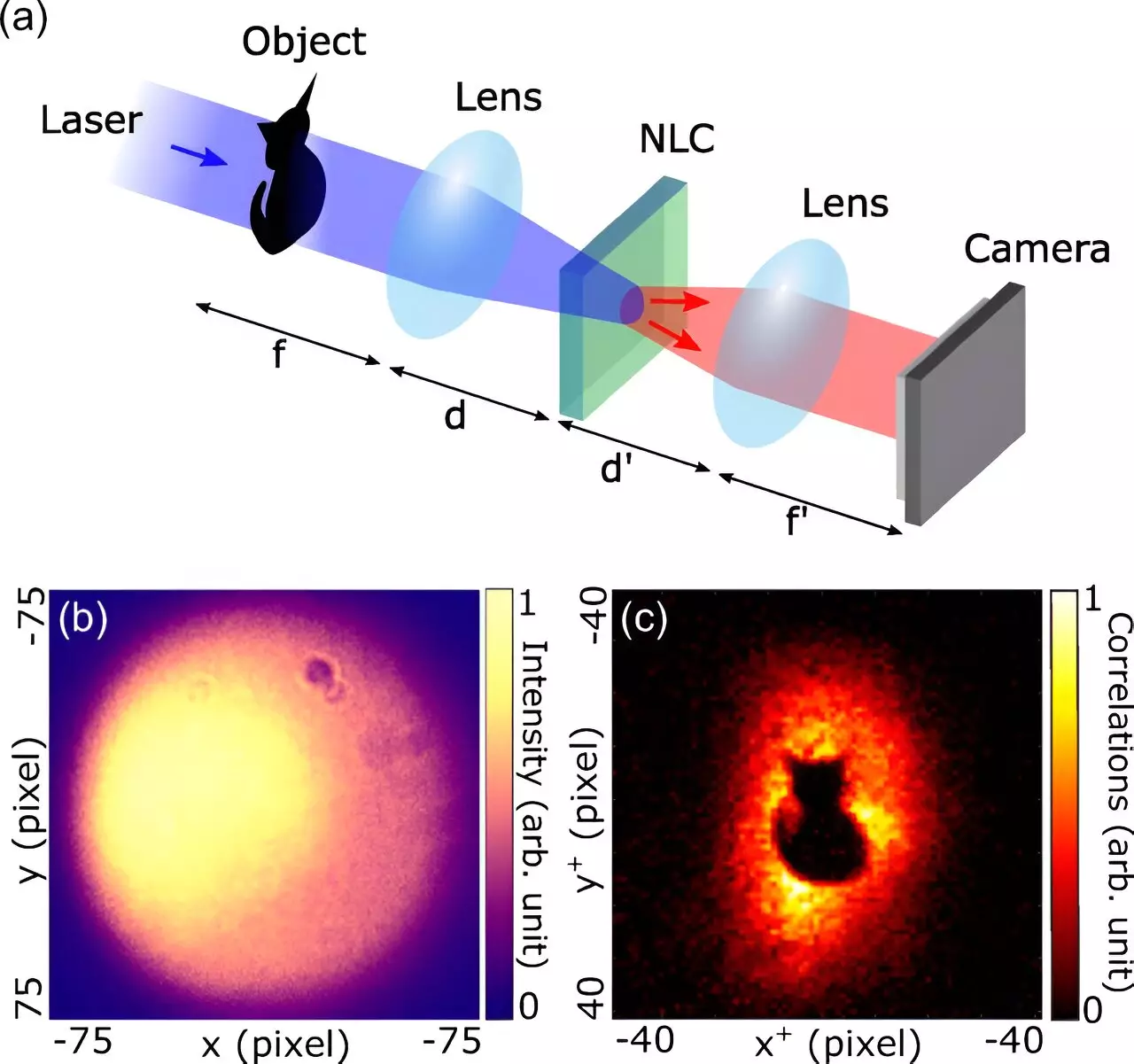The recent study conducted by researchers at Sorbonne University’s Paris Institute of Nanoscience introduces a groundbreaking technique that encodes images within the quantum correlations of entangled photon pairs. This innovative approach not only presents unique possibilities in imaging but also showcases the transformative potential of quantum mechanics in practical applications such as cryptography and quantum computing.
Entangled photons are photons that are interconnected in such a way that the state of one directly influences the state of another, regardless of the distance separating them. This intriguing property forms the bedrock of various quantum technologies. In much of today’s quantum photonics, entangled photon pairs are generated through a process known as spontaneous parametric down-conversion (SPDC). During SPDC, a high-energy photon—typically produced by a blue laser—is split into two lower-energy entangled photons.
Research indicates that achieving specific quantum correlations between these entangled pairs can enhance functionality in applications ranging from secure communications to advanced computational systems. Thus, fine-tuning the properties of the generating pump laser is paramount. The scientists at Sorbonne University recognized that by manipulating the spatial characteristics of the pump laser, they could exert greater influence over the resultant entangled photons.
The researchers devised a unique experimental methodology that integrates lens systems to encode an object’s image into the spatial correlations of entangled photons. The experimental setup employs a conventional two-lens system, but instead of yielding a direct image, the introduction of a nonlinear crystal alters the outcome fundamentally. When placed between lenses, this crystal catalyzes the SPDC process, resulting in pairs of infrared entangled photons. Notably, if researchers attempt to visualize the photons directly via standard imaging techniques, the outcome is deceptively ambiguous—initially appearing devoid of information.
However, the crux of this research lies in the post-processing of these supposed ‘invisible’ images. When researchers apply specific detection techniques, focusing on photon coincidences and their spatial arrangement, the encoded object emerges distinctly from the noise. The ability to extract a coherent image from correlations, as explained by Chloé Vernière, reveals how quantum mechanics allows for a fundamentally different understanding of imaging.
One of the most compelling aspects of this discovery is its potential implications for advanced imaging and cryptography systems. Traditionally, the advancement of imaging technologies has relied on improving resolution and sensitivity. However, this new paradigm offers an alternative path by leveraging quantum properties. By harnessing the spatial correlations between entangled photons, researchers aim to develop new imaging protocols that could greatly enhance capabilities in complex and turbulent media environments.
Hugo Defienne, who supervised Vernière’s research, emphasized the untapped potential in connecting quantum correlations with practical technology: “We are really using a rather underexploited degree of freedom of light—namely the spatial correlations between photons—as a canvas on which we print an image.” This vision opens doors for future innovations in secure communication networks, where the manipulation of information through quantum states could offer unparalleled security features.
Looking ahead, the implications of encoding multiple images into a singular beam of entangled photons are equally staggering. By varying the optical planes of the imaging system, researchers hypothesize the potential for multilayer imaging, enriching the data that can be encoded within a single quantum state. Such versatility not only enhances data storage but also offers exciting prospects within the realms of data transmission through scattering media.
While the initial investigations into spatial correlations and entanglement may appear esoteric, the practical applications suggest a burgeoning field ripe for exploration. The unique ability to decode information trapped within quantum correlations highlights the profound impact of quantum optics on future technologies, bridging the gap between theoretical physics and real-world applications. As researchers continue to unveil the intricate dance of entangled photons, we stand on the precipice of a new era in imaging and secure communication.


Leave a Reply